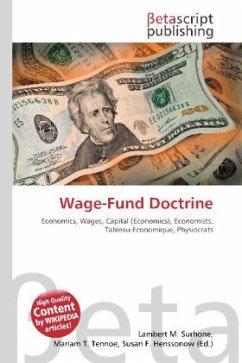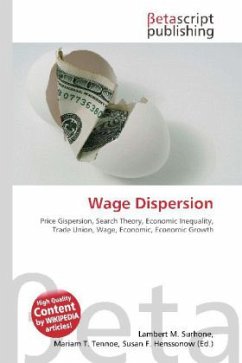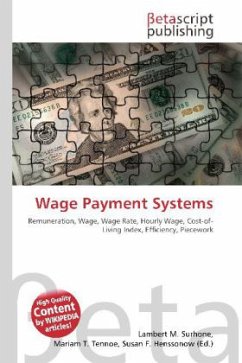Please note that the content of this book primarily consists of articles available from Wikipedia or other free sources online. The Wage-Fund Doctrine is an expression that comes from early economic theory that seeks to show that the amount of money a worker earns in wages, paid to them from a fixed amount of funds available to employers each year (capital), is determined by the relationship of wages and capital to any changes in population.The economists who first stated this relationship assumed that the amount of capital available in a given year to pay wages was an unchanging amount. So they thought that as the population changed so too would the wages of workers. If the population increased, but the amount of money available to pay as wages stayed the same, the results might be all workers would make less, or if one worker made more, another would have to make less to make up for it and workers would struggle to earn enough money to provide for basic living requirements.
Bitte wählen Sie Ihr Anliegen aus.
Rechnungen
Retourenschein anfordern
Bestellstatus
Storno








